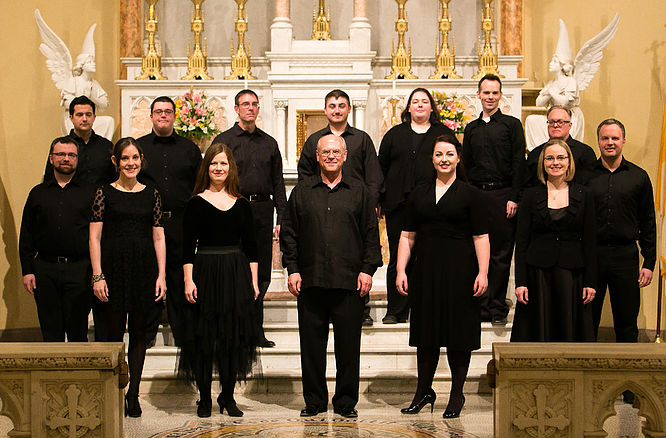Chantry marks Pentecost week with a thoughtful program

Chantry performed at the Church of St. Mary Mother of God Saturday night.
Renaissance polyphony is one of the glories of music history, music that is both simple, when performed only by singers, and dizzyingly complex in contrapuntal interweaving.
Chantry, a small choir based in Washington and directed by David Taylor, sings this music extremely well. The group ended its three-concert season Saturday night with music for Pentecost Vespers and Mass, in the immaculate acoustic of the church of St. Mary Mother of God.
The bulk of the Vespers half of the evening, sung as the church darkened at dusk, was given to Felice Anerio’s setting of the five Vespers psalms. These rather simple pieces are in alternatim format, switching back and forth between the original plainchant and new polyphony. Taylor took the polyphonic portions at fast tempi, accenting the contrapuntal heightening of what is mostly a somewhat plain, homophonic texture in four parts.
The treble voices excelled in their turns at the chanted verses, as in Dixit Dominus and Beatus Vir. Light and airy, blended in almost perfect unison, and the rhythmic pacing of the words felt lithe and natural. When the men chanted, as in Confitebor Tibi and Laudate pueri, their sound was more a collection of individuals than a melding together, and scooping in some of the voices caused problems in intonation. This held true in the group’s forceful chanting of the Gregorian hymn and sequence later.
It is traditional to leave off the initium, the opening formula of the psalm tone, after the first verse of a chanted psalm, while it is sung with each verse when chanting a canticle. Chantry did not observe this distinction in the Anerio pieces, but that is a minor historical point. The polyphonic pieces were crystalline in structure and balance, with one small disagreement about an accidental in one male line in Confitebor Tibi.
The workmanlike qualities of the Anerio pieces stood out in comparison to the stunning Magnificat Octavi Toni by Victoria, also in alternatim texture with more complex polyphony divided into six voices on the last verse. The verse for three higher voices, “Esurientes implevit bonis,” was especially beautiful, a light-filled moment that hovered in space. The Spanish composer packed much greater harmonic variety into this music than what Anerio created.
After intermission, the lights came on in the church for the Mass portion of the program, centered on Palestrina’s Missa Dum complerentur. Set for six voices, this polyphonic version of the Latin Ordinary is based on the composer’s Pentecost motet Dum complerentur, which Chantry sang at the conclusion of the evening.
Taylor’s rather quick tempo choices gave this music a virtuosic sheen, as the occasional runs in the texture sparkled like ornamentation. This made the off-beat motifs, as at “Propter magnam gloriam tuam” in the “Gloria” movement, pop out of the contrapuntal fabric. Taylor had obviously studied these scores quite closely, though he tended to micromanage entrances with overly emphatic cues. The conducting style seemed better suited to a 200-piece marching band a half a block away, rather than a baker’s dozen of singers directly in front of him.
The blend of the thirteen voices was generally good, with exceptions only at the fullest and loudest points, where the lower voices tended to dominate the textures. Another high point in the Mass was the “Christe eleison” section of the “Kyrie,” where Palestrina reduced the texture to just four higher voices, a lovely exploration of treble sound. The soprano section had a clean, boy-like sound, up to the high G, beautifully placed, at the “miserere nobis” section of the “Gloria.”
Intonation wavered toward the end of the Mass, a sign of fatigue perhaps, with the sopranos tending sharp and the lower voices going slightly in the other direction.
This was a minor fault, however, and the group recovered their poise for a fine rendition of the Mass’s source material, the Pentecost motet. Here Taylor’s rapid pacing paid dividends, with delightful rhythmic alacrity in the bouncing “Alleluia” sections and a lovely “roaring wind” crescendo effect at the words “et subito factus est.”
